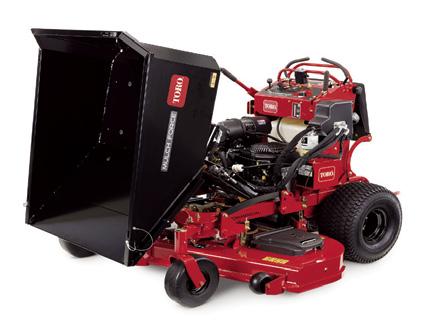Gardener News Gardener News





Jersey Fresh blueberries at Macrie Brothers Blueberry Farms, home of the Blue BuckTM brand blueberries.
By Tom Castronovo Executive Editor/Publisher Gardener News
I found out that blueberries are grown on a flat, semi dry to moist sandy loam soil with a pH between 4 and 5.
On a mid-June, hot, clear day, I made a trip to Hammonton, Atlantic County to the blueberry capital of New Jersey.
From my house it was a solid two-plus hour drive. My destination was a farm called Macrie Brothers Blueberry
Farms at 7638 Weymounth Road, home of the Blue BuckTM brand blueberries.
Upon my arrival I was met in the parking lot with a warm welcome from Matt Macrie. I was led inside to a secure lobby and was asked to sign in. A buzzer rang on a door
to the left of us, and then I was led into the inner office by Matt. We walked through the offices into the production and packing facility. I was immediately given a hairnet to wear. I was glad to be inside because it was chilly in the building. It was a
refreshing getaway from the outside heat.
As we toured, I learned the Macrie family has been growing blueberries in New Jersey since 1953. What started as a 26-acre farm has now blossomed into an 800-acre
(Cont. on Page 21)



When I was a young boy of Irish, Scottish, and Polish heritage, I looked forward to… pasta night. Or, as my younger brother called it, “Bisgetti Night.” And my mom always made a great sauce. It had canned, sometimes fresh, tomatoes and ground beef and spices like basil and oregano. And it was always called sauce or tomato sauce. Flash forward many years later, as I travel the state of New Jersey and meet new friends, and I’m told what I’ve been eating is called “gravy” in certain areas because it has meat in it. And it’s best made with tomatoes from Italy.
Anyone familiar with modern movies like “Goodfellas” knows the schizophrenic nature of “sauce vs. gravy” and the fact that finding consensus on the issue, even in the culture represented in those films, does not come easily.
But no matter what you call it, or what your family’s secret recipe is, we can all agree that the main ingredient is a great tomato. Whether it’s from your garden or from your favorite farm market or farmstand, we know pasta night is better with tomatoes from the Garden State.
Why are tomatoes from right here so highly prized, whether to eat raw, on a sandwich, or as

By Joe Atchison III Assistant Secretary of Agriculture
the base for whichever word you use for what you pour over your pasta?
Our sandy, acidic soils provide the perfect growing conditions and drainage so that Jersey Fresh tomatoes can reach peak color and flavor just outside our doors. And being a big fan of pizza, I get a sense of pride walking into a critically acclaimed pizzeria and seeing cans with the Jersey Fresh logo on the side.
There’s almost always a lot of talk about tomatoes in New Jersey, especially with the season really starting to ramp up. One question not always asked is, where did tomatoes come from originally?
If you said Italy or anywhere in Europe, you’d be mistaken. With
the stories of Marco Polo bringing pasta back to Europe from China, one might think, perhaps Asia? Nope.
Tomatoes originally came from wild plants in South America, specifically in the Andes Mountains in areas now known as Peru and Ecuador. They were small, somewhere between the size of a pea or a small grape, along the lines of what we now call “cherry” or “grape” tomatoes. They were first domesticated in Mexico and Central America and were crossbred to develop many shapes, sizes and colors of what the Aztecs called “tomatl,” meaning “the swelling fruit.” Explorers from Spain were intrigued by the plants and began taking them back home in the

16th century. People admired the colorful plants but had concerns about eating them, so they used them mainly as decorative plantings in their gardens.
It wasn’t until the 18th century that the tomato began gaining acceptance and growing in popularity in the Mediterranean region, including Italy, then began being transported around the world along trade routes.
Along the way, tomatoes found their way into such a wide array of fresh and processed foods that it’s almost impossible to have a meal without at least one of them. Hamburgers and fries? Ketchup, of course. Tacos? Bring on the salsa! New Jersey’s tomatoes received acclaim not only because they were great raw,
but also because companies like Campbell’s and Progresso here in New Jersey were using them to make popular items.
Every summer in New Jersey, our residents and people from all over the Eastern Seaboard look forward to enjoying Jersey tomatoes in their many forms, including beefsteak, plum, or Roma, grape and cherry, and even “ugly” heirloom varieties. It’s always an adventure seeking out new varieties or finding old favorites at your local garden center or already mature on the shelves of your community’s farmers markets.
And depending on the weather and the variety, these gems are available well into October in many parts of the Garden State. Enjoy them all and visit www. FindJerseyFresh.com for locations and some great recipes!
Editor’s Note: Joe Atchison III is the New Jersey Assistant Secretary of Agriculture. Atchison is also the Director of the Division of Marketing and Development for the New Jersey Department of Agriculture. He can be reached at (609) 292-3976.
The 2024-2025 New Jersey FFA officer team elected as part of the 95th Annual State FFA Convention represents four chapters from Monmouth, Warren, Cape May, and Hunterdon counties. They will be leading a state record membership high 3,438 in 37 chapters from around the state. The officers will represent New Jersey FFA at several state and national functions throughout the year.
The new officers, and their respective chapters are Niccolo Conte (Allentown FFA), President; Allison Josielewski, (Allentown FFA), Vice President; Abrianna Portillo, (Phillipsburg FFA), Treasurer; Tyler Murnaghan (Cape May Tech FFA), Secretary; Nina Weiland, (Hunterdon County ESEA FFA), Reporter; and William Rutherford (Cape May Tech FFA), Sentinel.
“We have a committed and enthusiastic group of officers who are prepared to lead a membership that continues to grow,” said New Jersey State FFA Advisor and Food, Agriculture and Natural Resources Education Program Leader Erin Noble. “They understand the responsibilities that come with these positions and the importance of their roles as leaders as they set the example for FFA chapters in our state.”
FFA is a component of a food, agriculture and natural resources program of instruction that prepares students to pursue fulfilling careers in the business, science, education, and technology of agriculture. There are nearly 950,000 members across the nation.
Some of the state officer duties include assisting chapters in the execution of their program of activities; encouraging FFA members to participate in food, agriculture and natural resources education and FFA programs; maintaining positive relations with members, the agribusiness sector, the public and others interested in agricultural education; traveling to FFA chapters around the state 2-3 times per month; assisting at career development events, including fall, spring, and summer; and representing the New Jersey FFA Association at events of other state agricultural organizations. or more information about New Jersey Food, Agriculture and Natural Resources Education and the state FFA program visit http://www.jerseyageducation.nj.gov/.


The Floriculture Program of USDA’s National Agricultural Statistics Service (NASS) is the federal government’s official source of statistics about Floriculture crops.
Since 2021, the Floriculture survey and estimating program includes all 50 states. The top 28 states are published individually with the remaining states combined into the “other states” total. (Fig.1)
NASS conducted the survey among operations that annually produce and sell at least $10,000 of fresh cut flowers, potted flowering plants, foliage plants, annual bedding and garden plants, potted herbaceous perennials, cut cultivated florist greens, and propagative (unfinished) floriculture material. Annual sales include retail and wholesale sales of items surveyed.
Access 2023 and earlier floriculture data through the Quick Stats database (http://quickstats.nass.usda.gov).
•In Program, select “Survey”
•In Sector, select “Crops”
•In Group, select “Horticulture”
•In Commodity, select the crop(s) for which you want data
•Select your category, data item, geographic level, and year
Floriculture in 2023
The number of floriculture producers totaled 10,216, compared to 8,949 in 2022. For the 28 program states published, the number of producers increased 17% from 7,590 in 2022 to 8,887.
The total value of sales across all floriculture crops totaled $6.69 billion, virtually unchanged from 2022. For the 28 program states published, the total value was $6.31 billion, a decrease of less than 1% from 2022.
Area used for production was 851 million square feet compared to 833 million square feet in 2022.
Of the 10 largest states, Florida had the highest sales, followed by California. Combined, Florida and California accounted for 33% of all sales in the United States.
The top five states each had more than 600 floriculture operations in 2023. Over one-third of all operations were in these states.
The number of operations with hired workers totaled 6,527 in 2023. The U.S total increased 3% from 2022.
The average peak number of workers per operation was 16.4 nationally in 2023. The U.S average number decreased from 17.7 to 16.4 per operation.

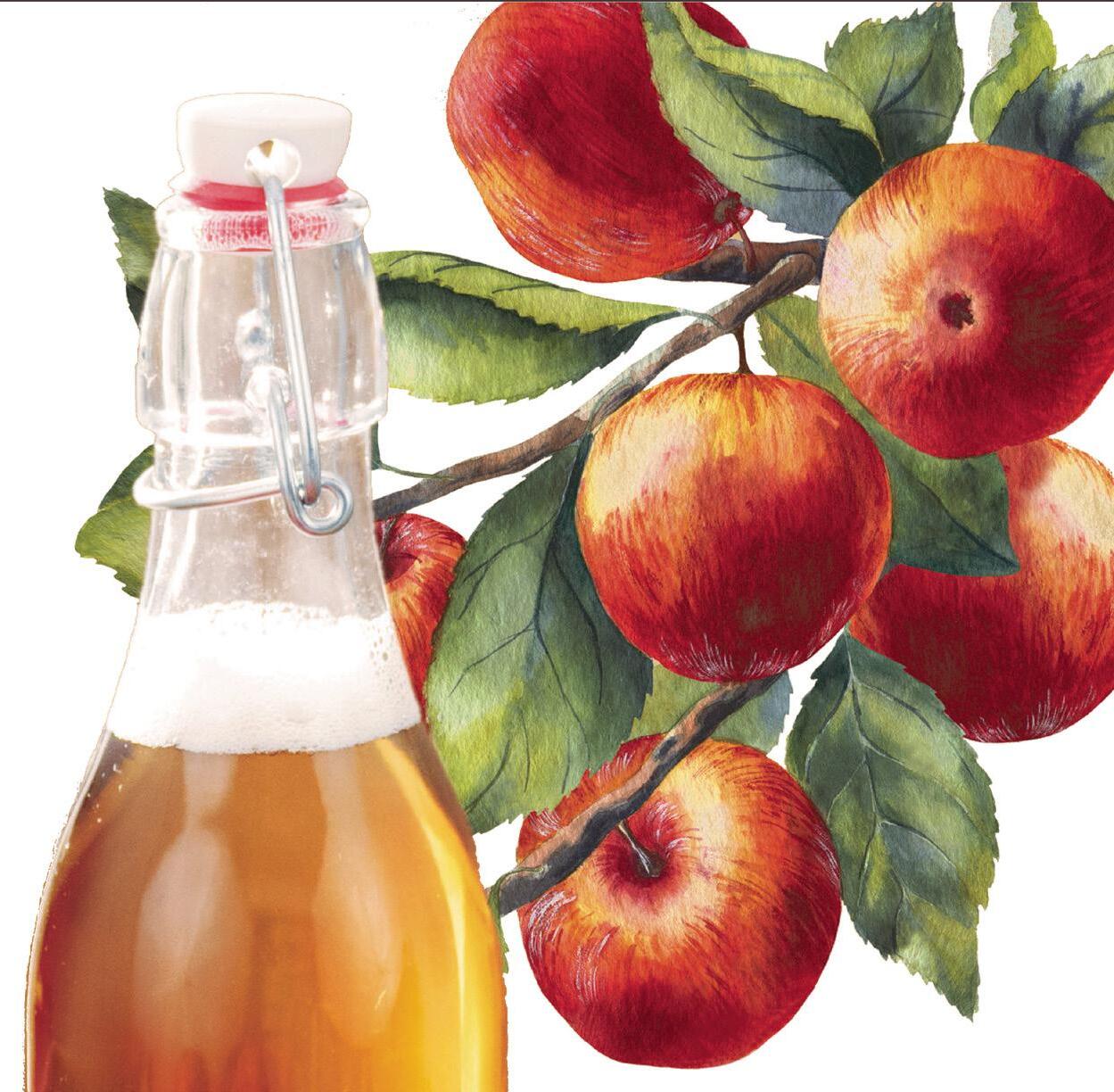



Peaches were our main crop during the summer months of July and August when I was growing up. We would pick sweet corn first thing in the morning because that had to be picked fresh each day, grab something to eat, and then start picking peaches.
We would pick them into wooden half bushel baskets and stack them in our cooler where they would remain until they were sold. If I had to guess, I would bet that sixty to seventy percent of our retail sales during the summer months came from peaches. And while that might seem like a lot, that was nothing in comparison to how important they were back in the early 1900’s.
While I am not sure when peaches were first introduced in North America, growers really started producing peaches in large quantities during the late 1800’s. Peaches grew well here in New Jersey. The winters were cold enough, but not so cold that the trees would be injured. There was adequate rainfall, and once the trees blossomed in the spring, it usually stayed mild enough so that they didn’t freeze and then were able to
Wild leeks or ramps! Ramps actually have 3 by 7 inch long green leaves similar to those of lily-of-the-valley. However, when ramps bloom, these dark green spring leaves are long gone. Viewing these flowers in July, you may wonder how they can just spring out of the ground.
Since lily-of-the-valley is very toxic, a mistake in ID can lead to an emergency or even a fatality. Ramps, interestingly enough, are listed as mildly toxic; ingesting large quantities will lead to diarrhea and vomiting.
Eating ramps on a regular basis makes no sense. Why? Well as I’ve written before, the commercial leek weighs about 1/2 lb., takes up about 162 inches of soil, and takes one year to grow to maturity. A wild leek takes up about 22 inches of soil so you can grow about eight wild leeks in the space of one commercial leek. However, a wild leek weighs about 0.17 oz. and takes 3 -7 years to mature (3-4 years if you plant seedlings and 5-7 years if you start from seeds). The ratio is about 100/1 in favor of the commercial leek.

produce a good crop.
By Peter Melick Agricultural Producer
When people learned how to can peaches so they could be kept and enjoyed throughout the year, they really took off in popularity, and peaches turned into a real cash crop for those who could grow them. At that time, there were very few options when it came to consuming fruits and vegetables out of season. Most items were just too perishable to be kept for any length of time. But, aided by the mass production of glass jars, people soon learned how to can and store peaches so that they could be enjoyed all year round. Farmers were learning how to grow them, and consumers were learning how to enjoy them. And then came the railroads. With the advent of this new and

modern transportation system, peaches could be shipped from the rural parts of New Jersey to cities and urban areas (where there were plenty of willing customers), in a very short amount of time. Peach growers couldn’t grow enough peaches. Railroads were expanded so that other areas of the state could capitalize on this new phenomenon. Other related industries such as tree nurseries and basket factories sprang up seemingly overnight. It was said that one of my ancestors was able to pay off the mortgage on his farm with one peach crop! But all good things must come to an end. As usual, farmers overproduced themselves right out of profitability. Also, the pest “San Jose Scale” found its way to New Jersey and growers
had to learn how to cope with it. And with lower prices being received for peaches, many were not willing to learn. Also, the transportation system improved so that peaches, along with other fruits, could be shipped into the area from further and further away. New Jersey peach growers did not have the captive audience they once had.
While the boom times of the peach industry may be in the past, certain aspects of it remain to this day. New Jersey still has an excellent climate for producing great tasting peaches. In fact, New Jersey is as far north as peaches can be consistently grown unless they are grown in close proximity to a large body of water to moderate the temperature
By Hubert Ling Horticulture Chair
Thus if you really want to eat sustainable food, wild ramps are not the way to go.
A recent study showed that harvesting at 10 or 15% of a wild population will result in population declines. One source recommends taking 1% a year to maintain a sustainable harvest. The problem is that few commercial harvesters will limit themselves to 10 or 15% of a wild population, and with the popularity of ramp festivals many wild populations are headed to extinction. Legislation was passed in Quebec prohibiting the commercial use of ramps to prevent its total loss, and populations are in decline in North Carolina and Tennessee.
To prevent this from happening, you can grow your
own. Ramps are reasonably easy to grow if you have patience, shade, and provide a rich, deep, moist soil. The seeds which mature in the fall require a cool, moist period before germination. You can start cheaply with a few seeds or seedlings. The young plants grow slowly in the shade and mature in about 4-6 years; then if successful you will have a good seed supply for the first bountiful harvest seven years later. Ramps do not compete with aggressive invasives so keep the area well weeded. Thus in about 14 years you can invite your neighbors to a first ever sustainable ramp festival. If you use restraint in consuming your ramps, you can repeat the festival in 7 years or run down to the
during the winter months. Also, New Jersey has the perfect mix of sunshine and rain (usually) to produce great tasting peaches year after year. And because New Jersey peaches don’t have to be shipped across the country first, they can stay on the tree longer, thereby making them a much juicier and more flavorful alternative to those that are produced thousands of miles away.
So, even though peaches are available almost all year round, if you really want to enjoy them, July and August is the real peach season. Eat a peach!
Editor’s Note: Peter Melick is co-owner of Melick’s Town Farm in Oldwick and a 10th-generation New Jersey farmer. Peter is a member of the Tewksbury Township Committee, Hunterdon County, NJ. He also served as a director for the New Jersey Farm Bureau and is a past president of the New Jersey State Board of Agriculture. Peter has also been featured on NJN, News 12 New Jersey and on the Fox Business Network.
also noting that deer generally avoid the plant, you might use moderation in ingesting ramps.
grocery store and simply buy a few commercial leeks.
Indigenous Native Americans named the south-western shore of Lake Michigan chicagou after the abundance of ramps which grew in the area. We now call this area Chicago, but I don’t remember seeing even one ramp in my brief visits to the present day city. Ramps were used in many traditional dishes served by several Northeastern Native American tribes, and the Cherokee used the vitamin C rich plants as a spring tonic. The pungent plant was also used as a quick acting emetic and as a deworming agent. Some Native Americans also used the crushed bulbs to treat insect stings. By viewing the various uses of the plant and
Ramp flowers are white, very small, tulip shaped, and are borne in spherical clusters about 1.25 inches in diameter. They develop on long stalks which seemly arise magically from hidden bulbs. When a flower matures it is replaced by 3 small, hard, black seeds. Ramps are generally pest free, but bulb rot can occur in wet soil and bulb mites can also sometimes attack; however, after growing them for 25 years I have not had any major problems.
Ramps have a rich cultural history; they are very useful since they can grow in the darkest areas of your garden. If you grow them, you can morally satisfy your curiosity as to why Appalachian Ramp Festivals are so popular.
Editor’s Note: Hubert Ling is Past President of The Native Plant Society of NJ and Horticulture Chair. He can be reached at milhubling@verizon.net.
Atlantic County
Phone: 609-625-0056
Bergen County Phone: 201-336-6780
Burlington County Phone: 609-265-5050
Camden County Phone: 856 216 7130
Cape May County Phone: 609-465-5115
Cumberland County Phone: 856-451-2800
Essex County Phone: 973-228-2210
Gloucester County Phone: 856-224-8040
Hudson County Phone: 201-915-1399
Hunterdon County Phone: 908-788-1339
Mercer County Phone: 609-989-6830
Middlesex County Phone: 732-398-5260
Monmouth County Phone: 732-431-7260
Morris County Phone: 973-285-8300
Ocean County Phone:732-349-1246
Passaic County Phone: 973-305-5740
Salem County Phone: 856-769-0090
Somerset County Phone: 908-526-6293
Sussex County Phone: 973-948-3040
Union County Phone: 908-654-9854
Warren County Phone: 908-475-6505



Schilling Director
As we prepare for the summer months in New Jersey, there are many activities to look forward to – trips to the shore, spending more time outside with friends and family, gardening, and harvesting fresh fruits and vegetables. The harvesting of produce can be a great addition to many summer activities, and what better way to access fresh food than from your very own yard!
Planting your own fruit trees at your home can be a great way to connect with nature and promote a sustainable way of living. Fruit trees can provide habitat for wildlife, including birds and pollinators. Fruit trees can also work well as shade trees, especially when planted on the south to southwest side of the house. These trees can reach a fairly large size, so make sure to leave room for future growth. In addition, fruit trees may be valuable additions to the landscape to act as screens to block traffic noise and provide privacy. Finally, there can be an economic benefit to growing your own food and reducing your grocery bill.
There are several ways you can add fruit trees to your landscape, either as a dedicated orchard, grown in containers, or planted among ornamentals. Important considerations are site preparation, crop selection, pest management, and cultural practices to maintain crop health.
In the home landscape, plant nutrition may not be a concern, because slow growth and low production are acceptable. The best method of determining your soil nutrition needs is to have a soil test analysis done by a local soil testing facility. Information on sampling techniques and pricing is available from your
county Extension office. You can also consult Rutgers Plant Diagnostic and Soil Testing Services
Apples, pears, and plums are fairly low maintenance once established, with minimal fertilizer and pruning requirements. Plant two or more varieties to ensure good cross pollination. Another option for pollination in apples is to plant crabapple nearby, as they will pollinate with most apple varieties. Common apple varieties recommended for New Jersey growers include Red and Golden Delicious, Gala, and Honeycrisp. Pears and plums grown in New Jersey include European and Asian cultivars. Also consider varieties that show resistance to certain diseases, including scab and fire blight, when available.
Peaches and nectarines are ideal for many homeowners because they are quick to fruit, often producing some fruit after one year from planting. All peach and nectarine varieties are self-pollinating; therefore, it is not necessary to plant multiple varieties. Peaches and nectarines do flower early in the season, so there may be a risk to the crop if there is a late frost. Ripening is between June and September, and fruits will continue to ripen after they have been picked, but it is important to not harvest the fruit off the tree too soon.
Cherry trees are fairly low maintenance and ideal trees for the landscape; however, they do need good, fertile soil and regular watering until established. You may also be regularly competing with birds to harvest ripe fruit. Both sweet and sour cherries produce fruit from June through July and are self-fertile, meaning they do not require cross pollination to
produce fruit. Sweet cherries can be more challenging to grow due in part to cracking in the fruit.
Grapes are an attractive option for the home landscape. The climate and soil in New Jersey are well-suited to growing grapes that make good wine. You can also grow grapes for jellies, jams, and juice. Diseases, including black rot, can require management with cultural practices and fungicides. Always follow fungicide label instructions to make sure the crop is listed and that it is approved for residential uses. Elderberry is another plant that requires little maintenance, and its fruit can be used to make jellies, jams, and wines. Pawpaw is also an option that has relatively few pests, is native to the United States, and produces delicious fruit somewhat resembling a banana in taste.
To maximize production and maintain plant health, it is important to irrigate your fruit trees through periods of low rainfall and plant stress. Training and pruning are also essential components to having a healthy fruit crop. Open center training systems are typically used for peaches and nectarines, whereas apples, pears and plums are normally trained to a central leader. Regardless of the training system, pruning is important to maximize fruit production. While there are pest management and cultural practices to consider in maintaining fruit trees in your home landscape, choosing an appropriate area and selecting low maintenance fruit crops are great places to start and possibly expand your production. You may find that growing and picking your own fruit will be a very rewarding experience!
On April 26, USDA and Rutgers New Jersey Agricultural experiment Station (NJAES) leadership announced a $232,378 Distance Learning grant at the university’s Institute for Food, Nutrition, and Health (IFNH) in New Brunswick.
Rural Development State Director Jane Asselta was joined by NJAES Executive Director Laura Lawson, and NJAES senior associate directors Peggy BrennanTonetta, Wendie Cohick and Brian Schilling to announce the details of the project, which provides distance learning services and equipment to support agricultural and food business viability and sustainability in southern New Jersey.
The project was funded under the Rural Utilities Service (RUS) Distance Learning and Telemedicine Loan and Grant Program (DLT), and will be used to equip two hub sites and two end-user sites with state-of-the-art distance learning equipment to provide critical education and training to agricultural and food businesses in the rural southern part of New Jersey. Rutgers Institute for Food, Nutrition, and Health on the New Brunswick campus will be linked to three outlying research and extension facilities, including Rutgers Food Innovation Center, Rutgers Agricultural Research and Extension Center and Phillip E. Marucci Center for Blueberry and Cranberry Research and Extension.
“We are thrilled to receive this funding from the Distance Learning and Telemedicine program. It will enable NJAES to connect our farmers and food related businesses, as well as the communities that depend on these businesses, with the vast resources at the main Rutgers campus and the NJAES food and agricultural facilities in rural South Jersey,” said Brennan-Tonetta who is the project lead.
A wide variety of training and distance learning courses will be offered including topics such as plant diseases, soil health, health and nutrition, food safety, risk management, regulatory compliance, value-added products, business development, and more. “This funding expands the information delivery mechanisms of Cooperative Extension to open up new opportunities for economic growth and access to educational resources,” stated Schilling, project co-lead.
Asselta, a Rutgers University Douglass College graduate, underscored her connection to Rutgers and highlighted the commitment of the federal government to providing access to education, training and healthcare resources for thousands of ag operators and residents.
“Serving rural New Jersey and supporting Rutgers University are two things near and dear my heart. The Biden Administration is working to increase farm income, reduce costs for farmers, and provide access to
The Rutgers Cooperative Extension of Morris County certified 16 Morris County residents as “Master Gardeners” and honored two dozen others for their volunteer service during a graduation luncheon this week at the Frelinghuysen Arboretum in Morris Township.
The event was led by Peter Nitzsche, department head of the county cooperative extension, and Jean Epiphan, an agriculture and natural resources county agent.
Certified Rutgers Master Gardeners of Morris County are volunteers trained to diagnose plant and pest problems, suggest cultural practices, and provide gardening advice to Morris County residents. Participants in the program receive in-depth training in gardening and horticulture from Rutgers University faculty and staff and must complete 60 volunteer hours to earn their certification.
The program, run in partnership with the Morris County Park Commission, starts every fall.
“We are proud of the graduates, honorees and all the Rutgers Master Gardeners who volunteer their time and expertise on projects benefitting the citizens of Morris County!” said Nitzsche.
The Rutgers Cooperative Extension also offers speakers on topics such as lawn renovation, pest control, and pollinator gardens. For more information on how to become a master gardener, visit https://morris.njaes.rutgers.edu/mastergardeners/
high-speed internet to improve efficiencies so farming in New Jersey continues to be a way of life. Providing funding to help close the technological gap between rural areas and agricultural education opportunities is critical to long-term sustainability of New Jersey’s farmers,” said Asselta.
In total, the project estimates benefitting over 3,700 agricultural operations and food companies, as well as over 5,000 residents. Lawson said the grant positions the NJAES and the university to make significant advancements in providing continuing education to communities and businesses in rural areas of the state.
Following the announcement, the new equipment and capabilities were showcased during a virtual call with Professor and Center Director Peter Oudemans of the Marucci Center.
Congressman Frank Pallone of the state’s 6th District, which oversees much of Middlesex County, said “For decades, the New Jersey Agricultural Experiment Station has served as a nationwide leader in advancing agriculture research and education programs. I’m proud that Rutgers University is receiving this federal grant, which will help NJAES better serve the people of New Jersey and connect the urban, suburban, and rural communities that they live in.”
The Rutgers Cooperative Extension (RCE) Food Waste Team is partnering with The Ohio State University, which was awarded a $2.5 million Pilot Consumer Education Campaign on Food Loss and Waste grant by the U.S. Department of Agriculture.
RCE’s Food Waste Team has a strong record of success in implementing food waste education and reduction initiatives and joins Ohio State on the latest USDA grant to develop, implement, and evaluate a pilot consumer food waste education campaign.
Sara Elnakib, chair of the Family and Community Health Sciences Department, heads the Food Waste Team at Rutgers and has led the implementation of effective climate change and food waste reduction programs in the municipal sector through various grant-funded projects. Elnakib and team have been working on the issue of food waste in New Jersey schools since 2017, including the statefunded “NJ Leaves No Bite Behind” project focused on educational interventions to reduce food waste in New Jersey schools.
Elnakib joins Brian Roe, the Fred N. VanBuren Professor of Farm Management in the Department of Agricultural, Environmental and Development Economics (AEDE) at Ohio State, on this new USDA grant that is part of the agency’s ongoing investment in research and consumer education to help reduce food loss and waste.
The collaborative pilot consumer education campaign to be developed by Ohio State and the RCE Food Waste Team will focus on promoting educational resources and guidance on how consumers can effectively combat household food waste. The outcomes of the pilot campaign will inform the development of an integrated education program for governmental and non-governmental organizations for local consumer food waste reduction campaigns.
According to the USDA, 30-40% of food produced globally is either lost or wasted throughout the farm-to-consumer supply chain, such as in fields due to spoilage and pest damage, while being stored, in transit, and when it goes unused by consumers. The U.S. sends nearly 80 billion pounds of food to municipal solid waste to landfills annually, and when food is tossed aside, so too are opportunities for improved food security, economic growth, and environmental prosperity.
With all of this spring rain you have certainly been mowing a lot. Proper mowing is key to a great lawn. Let’s explore what to do and what not to do with your mowing. First of all, did you give your mower a checkup this spring before you started mowing? Did you drain the gas out of the tank last fall after your last mowing? Did it start right up on the first pull or take forever to get going? Just like your car, you need to put a little love into your mower to keep it running its best. Did you sharpen the blade, clean the mower deck, change the oil, etc.? When? Never, ouch! If you are not comfortable doing these tasks yourself, take your mower to a qualified mower repair shop for service.
Weeds are always a problem in lawns and frequent mowing can reduce a lot of weed growth. By mowing the lawn weekly during the growing season, you encourage the grass to grow and thicken which reduces weed competition. Some weeds cannot take the summer heat so they go away
Crafting the botanical names of plants is not an easy task and often requires a knowledge of Latin, Greek and many mythological tales from around the world. This depth of knowledge is no more apparent than in the naming of Lycoris squamigera, commonly called Surprise Lily or Naked Lady. Displaying beautiful clusters of pink flowers in July and August, I never would have guessed the genus name was inspired by a tragic Chinese myth of passion, a beautiful Roman mistress and poetry of love lost.
Lycoris is a member of the Amaryllidaceae or Amaryllis family, with 13-20 species stretching from Japan and Korea east to Afghanistan and eastern Iran. These species were originally placed under the genus Amaryllis in 1788 by the French botanist Charles Louis L’Héritier de Brutelle (1746-1800) when he described Amaryllis radiata. The plant was reclassified as Lycoris radiata in 1820 by the British botanist, poet and clergyman William Herbert (1778-1847). Revered for its blood red flowers in Japan and China, Lycoris radiata was the subject of a Chinese myth involving the tragic love affair between two ‘elves’ named Mañju and Saka.

By Todd Pretz Professional Turf Consultant
naturally when mowed. Keeping sharp mower blades is important for a great looking lawn. You wouldn’t want a surgeon to use a dull blade would you? Some say change or sharpen your mower blades for every 10 hours of mowing. This sharpening schedule may not fit into your summer plans, but consider having 2-3 sets of blades so you can rotate them. If you have a professional help you with this task, they can also balance the blades, just like your car tires, for maximum performance and to reduce stress on the mower motor. When is the best time to mow your lawn? Mid-morning or late afternoon is best. Why? Because the grass has time to

dry out some if it rained or was irrigated, and you don’t want to mow in the middle of the day if the weather is hot and dry. Also, late afternoon is a more desirable time to mow because the sun is less intense. If you have a choice, mow before it rains so moist grass clippings do not clog up the mower deck. Do not cut your lawn too short or it will become stressed during summer weather. I suggest you mow no lower than 2-1/2 inches and no higher than 4 inches if you like it long like a Beatles haircut. During summer months raise the height to 3 or 3-1/2 inches. If you miss a week of mowing and the grass grows a lot, do not cut more
than the top 1/3 off so you do not shock the grass plants. If you mow often enough, there should be no reason to remove the clipping unless you like that super clean look. Clippings are mostly water and nutrients so if they stay on the lawn they can reduce some of your watering and fertilizing needs.
It is better to water after you mow if the lawn needs some water. This will bring some vigor back to the lawn during warmer summer months. Speaking of watering, this spring we experienced an excessive amount of rainfall. You could have saved a lot on your water bill if you monitored the weather forecast and let Mother Nature
By Bruce Crawford Horticultural Manager
The sun goddess instructed Mañju to protect the flowers and Saka the foliage with the lone caveat that they were never to meet. Naturally, they planned a meeting whereupon they fell madly in love. As a punishment, the foliage was to appear in spring and the leafless flower stems in August, preventing the elves from ever meeting again!
This myth does not explain the name Lycoris, but it proved inspirational for Herbert. Lycoris, as it turns out was the alias or pseudonym of a young actress, dancer and mime named Volumnia Cytheris. Most likely of Greek decent, Cytheris was the freed slave of a Roman aristocrat who lived in the first century BC. She became a great actress and well educated, able to read and sing the poetry of Virgil to great
acclaim! She was also the mistress to Mark Antony, Marcus Junius Brutus, and the Roman politician Gaius Cornelius Gallus. Gallus was so smitten by Cytheris that he authored four books of poetry in recognition of her beauty, crafting her surname of Lycoris for the poetic verses. The last book was written around 40 BC, after Cytheris had left him. The book focused on his pining over love lost. Most likely the similarities between the loss of love for Gallus and the fate of Mañju and Saka provided the inspiration for Herbert to honor the genus with her name!
The species of Lycoris squamigera was named in 1885 by the Russian botanist Carl Johann Maximowicz (1827-1891). The plant is native to SE China, Korea
do the watering for you. Many lawns are damaged by too much rainfall and irrigation. Because of the wet spring, lawn fungus arrived earlier than usual once the weather warmed up in May.
At this time of year continue to mow as needed. If it gets really hot and dry, it would be best to reduce mowing a brown, droughtstressed lawn. Your fertilizer applications should have been completed by now. Wait until early September to evaluate what you may need to do to “fix” your lawn from summer heat, drought, insects and fungus. If ants, fleas, and ticks have been a nuisance, you can apply these controls now. Enjoy a picnic, go to the shore and have a lemonade, or get your favorite ice cream from the ice cream truck, it’s hot!
Editor’s Note: Todd Pretz is Vice President of Jonathan Green, a leading supplier of lawn and garden products in the northeast. For more information, please visit: www.jonathangreen.com
and Japan and the species epithet is from the Latin Squamigera meaning scaly; the small scales present on the flowers provide the flower with an attractive sparkling effect.
Lycoris grows from a true bulb and is best planted in early fall. The foliage appears in late February with the strap-like leaves reaching 20-24” tall by 1” wide before withering in early June. It is long forgotten when the flower buds rapidly shoot skywards atop stout, 18-24” naked stems, inspiring the common names of Surprise Lily and Naked Lady. The deep pink flowers appear in an umbel of up to 12 trumpet shaped flowers, each 3” in diameter with 6 prominent stamens and one central stigma.
Once established, Lycoris is amazingly easy to grow.
Successful in full sun or light shade, it looks best where the naked stems can emerge from another low growing groundcover, such as Hosta, various ferns, or even uncut turfgrass! Plants are also ideally suited for areas adjacent to purple foliaged shrubs, such as Calycanthus floridus ‘Burgundy Spice’ (Carolina Allspice). Plants are hardy in zones 5-9 and prefer moist yet well-drained soils with a slightly acidic to neutral pH.
Lycoris is a plant of many surprises, especially when the vibrant pink flowers appear virtually out of nowhere! Clearly, Herbert’s vast knowledge of poetry, mythology and botany was the needed ingredient for crafting such an intriguing name. Hopefully, Lycoris squamigera will provide years of intrigue and surprise for your garden!
Editor’s Note: Bruce Crawford is a lover of plants since birth, is the Manager of Horticulture for the Morris County Parks Commission, and a Past President of the Garden State Gardens Consortium. He can be reached at BCrawford@ morrisparks.net

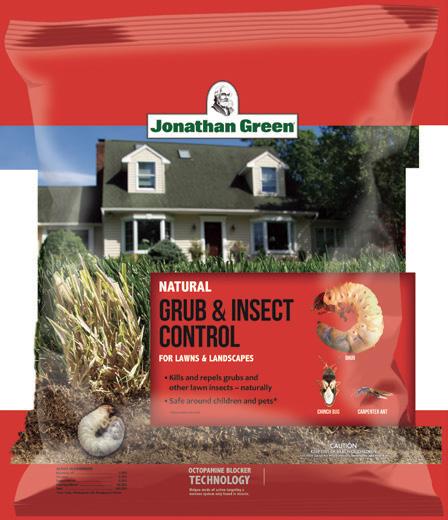




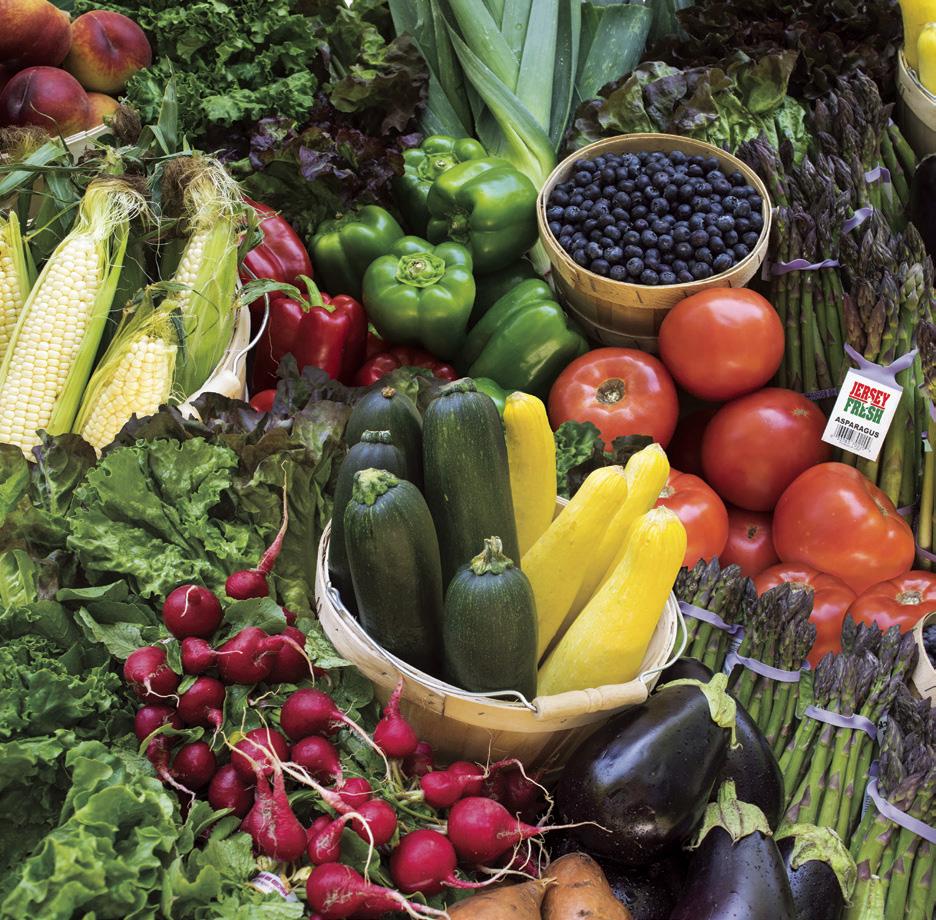



Barckett 201-446-0127
Patrick.Barckett@NJBobcat.com
201-788-4838
CraigD@NJBobcat.com
973-800-5097
Steve.Caputo@NJBobcat.com
973-800-7109
Sean.Kunkel@NJBobcat.com


A stroll around any residential area is likely to reveal many viburnums in the landscape. Collectively they have been a popular shrub for over 100 years. Many have been selected for the exceptional fragrance and others for their unequaled display of flowers. In recent years, there are several species and cultivars of native viburnums promoted to the public.
For clove-scented fragrance in April-May there are many exceptional viburnums. The Korean spice viburnum, Viburnum carlesii is pink in bud and opens to tubular very fragrant white flowers. At maturity it will reach six feet tall with an equal spread. Similar in stature is the closely related Judd viburnum, Viburnum x juddii which is a hybrid between V. carlesii and V. bitchiuense. Larger in stature, but also with rounded clusters of white flowers is Viburnum x carlcephalum ‘Cayuga’ which reaches up to eight feet tall with an equal spread, and for very large stature which can be used as a small flowering tree is the Burkwood viburnum, Viburnum x burkwoodii which is a hybrid between Viburnum carlesii and V. utile. The foliage on the Burkwood viburnum is attractive. The semi-evergreen leaves are shiny and narrow. At the Scott Arboretum at Swarthmore College it is

By Andrew Bunting Vice President of Horticulture
effectively used as an espalier where by it is trained closely to a wall. Espaliering is a pruning approach which enables the homeowner to have a large stature plant in a tight and congested location.
A wonderful old-fashioned viburnum is Viburnum macrocephalum, the Chinese snowball viburnum is a large stature multi-stemmed shrub or small tree to twenty feet tall. In April, the large ball-shaped clusters of white flowers emerge a lime green. As the flowers mature, they turn to pure white, and as flowers start to fade they return to a lime green color. There are few spring flowering shrubs that have the same “flower power” as this classic viburnum.
In recent years many of the native viburnums have become more coveted by gardeners. Many of the native viburnums have great spring flowers, followed by ornamental fruits, and most have exceptional fall color.
Growing in the nearby woods are three native viburnums to this area including the mapleleaf viburnum, Viburnum acerifolium; the arrowwood viburnum, Viburnum dentatum and the blackhaw viburnum, Viburnum prunifolium
The arrowwood viburnum, Viburnum dentatum is a multistemmed shrub that grows in the deep shade. In the spring it has an abundance of domelike white flowers. This shrub can reach up to 15 feet tall. In late summer it is covered in blue-black small fleshy fruits which are a food source for native songbirds. In the fall the leaves turn tones of yellow, red and burgundy. Chicago Lustre® is a more compact selection and because of its outstanding attributes is a selection of the Pennsylvania Horticultural Society Gold Medal Program.
Viburnum acerfiolium also grows in deep shade and as the common name would suggest it has a red maple-like leaf. In the
fall the leaves turn an attractive soft pinkish-orange and have a translucent quality. It, too, is a source of food with its late summer small black fruits for native birds.
Lastly, Viburnum prunifolium while it can grow as an understory shrub thrives better in more sun. This multistemmed shrub or small tree is covered in clusters of white flowers from late April to May. It is often found growing in thickets along the side of country roads. Reaching up to 15 feet tall it can be used as a small, native tree. It is a great source of fruit for birds and has exceptional red to burgundy fall color.
Other closely related native species include Viburnum nudum which has outstanding white flowers, pink, blue and purple fruits, and burgundy fall color. Both ‘Brandywine’ and ‘Winterthur’ are outstanding cultivars and both types are recommended for outstanding fruit set in the fall.
The viburnums are a very large and versatile group of ornamental plants that can provide fragrant flowers, ornamental fruits and outstanding fall color depending on the selection. Almost all of the cultivars and species are durable in the landscape and only have a few pest and disease issues.
Editor’s Note: Andrew Bunting is Vice President of Horticulture for the Pennsylvania Horticultural Society. He is one of the most recognized horticulturists in the Philadelphia, Pa., region and a highly regarded colleague in the world of professional horticulture. Bunting has amassed a plethora of awards, including the American Public Gardens Association Professional Citation, Chanticleer Scholarship in Professional Development, Delaware Center for Horticulture’s Marion Marsh Award, and the Certificate of Merit from the Pennsylvania Horticultural Society. In addition, Bunting has lectured extensively throughout North America and Europe, and participated in plant expeditions throughout Asia and Africa. Learn more at https://phsonline.org/team/ andrew-bunting
The Pennsylvania Horticultural Society (PHS) in collaboration with Aqua Pennsylvania, and local conservation districts, are joining forces to announce the 2024 grant recipients of their vital tree planting grant program, “Trees for Watersheds.” Formally known as “TreeVitalize Watersheds,” the “Trees for Watersheds” grant program provides crucial funding to help plant trees and shrubs along waterways and in other areas to help keep vital waterways in Southeastern Pennsylvania clean.
Since 2005, PHS has collaborated with these local partners to reforest stream corridors, termed “riparian buffers,” and other areas. Increased tree canopy helps improve water quality and provides additional environmental benefits such as improved air quality. These trees and shrubs help protect the quality of drinking water resources by stabilizing stream banks, cooling temperatures, soaking up contaminated stormwater runoff, and recharging groundwater supplies.
Through the support of PHS Tree Tenders, volunteers, grants from the PA DEP Growing Greener Funds, and Aqua, an Essential Utilities Company, the program’s
grantees have been able to plant more than 213,000 native trees and shrubs in Southeastern Pennsylvania including within Bucks, Chester, Delaware, Montgomery, and Philadelphia counties.
Since the “Trees for Watersheds” grant program’s inception, PHS has supported community and non-profit groups to plant these vital trees and shrubs. Aqua has been a key partner and funder of the program, investing more than $1.9 million to date for tree planting projects in the company’s customer service and source water protection areas. By leveraging the expertise of PHS and the local county conservation districts, the program can get funding and other resources in the hands of community partners doing on-the-ground work to restore tree canopy and improve water quality. Communities where the projects take place also benefit from reduced air pollution, enhanced open space, and improved wildlife habitat.
The grants allow partner organizations to leverage a wide array of resources where entire communities can come together to expand tree canopy. One program
spearheaded by Upper Darby Township along Darby Creek brought together the efforts of the Township’s public works crew, hundreds of hours of planting support from residents, and members of the Upper Darby Tree Tenders group, and even a hired herd of goats to help clear invasive plants in advance of the planting. In 2023, the Trees for Watersheds grant helped this group plant 145 trees.
“At the Pennsylvania Horticultural Society, we’re thrilled to be a part of the ‘Trees for Watersheds’ program alongside Aqua and our other partners. By supporting local communities in planting trees in these crucial watershed areas, we’re not only ensuring cleaner water for all, but also creating vital wildlife habitat and advancing health and well-being for all. This program is a testament to the power of PHS’s expertise in uniting people, government, and stakeholders under a shared vision for how horticulture advances communities. We’re excited to see the lasting impact these trees will have on our environment” said Matt Rader, President of the Pennsylvania Horticultural Society.


Pearl millet, an annual grass used for grain and forage, can be a good food source for honey bees and hover flies, according to a recent study.
The United States Department of Agriculture (USDA)’s Agricultural Research Service (ARS) and University of Georgia College of Agricultural and Environmental Sciences researchers studied the impact of pearl millet as a source of insect food by surveying insects collecting and consuming the sucrose-rich pollen of this crop.
Researchers planted Tift LongHeaded Bulk, a type of pearl millet known for its long candlestick-like heads, at a research farm in Tifton, Georgia, during the past summer.
According to the survey results, the most common insects observed feeding on Tift Long-Headed Bulk pearl millet were honey bees followed by lined earwigs, and maize calligrapher hover flies. Other pollinators such as two-spotted longhorn bees, common eastern
bumble bees, American bumble bees, sweat bees, and two other species of hover flies also feasted on the crop.
“What makes the study and the results fascinating is that windpollinated grasses, like pearl millet, are rarely promoted as a food source of pollinators in comparison to nectar-rich plants,” said Karen Harris-Shultz, a research geneticist at the ARS Crop Genetics and Breeding Research Unit on the UGA Tifton campus. “Our research shows that pollinators are utilizing grass pollen.”
Harris-Shultz added that the study was also the first time that lined earwigs, banded cucumber beetles, two-spotted longhorn bees, and American bumble bees were observed collecting or consuming pollen from the pearl millet crop. ARS researchers in Tifton previously studied pearl millet as a food source for pollinators in 1965, but that study has not been revisited since,
according to Harris-Shultz.
Harris-Shultz and the researchers’ work focuses on bees and other pollinators of grasses, especially the turfgrass centipede grass and sorghum. The researchers took an interest in pearl millet because of its ability to thrive in areas characterized by drought, low soil fertility, and high temperatures.
These traits make pearl millet, which is grown primarily in the southeastern United States, a lowinput crop with great benefits for pollinators and farmers looking for a good field border plant.
“Contrary to popular belief that grasses have no value to bees and other pollinators, this and our previous studies showed that these grasses can be good food sources for insects and may help combat decline in pollinator populations,” said Harris-Shultz.
In addition to being pollinators, several of these insects, such as the hover flies and lined earwigs,
are important biological control agents that assist in sustainable pest management.”
The study and its findings were published in the Journal of Entomological Science.
The University of Georgia College of Agricultural and Environmental Sciences (CAES) is a conduit for leading-edge science education and research opportunities to reach students statewide. With campuses in Athens, Griffin and Tifton, all CAES students have the opportunity to work with nationally recognized faculty in entomology, crop and soil sciences, horticulture and more.
The Agricultural Research Service is the U.S. Department of Agriculture’s chief scientific in-house research agency. Daily, ARS focuses on solutions to agricultural problems affecting America. Each dollar invested in U.S. agricultural research results in $20 of economic impact.

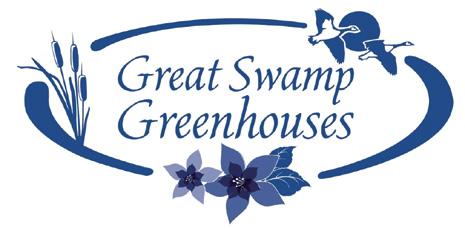




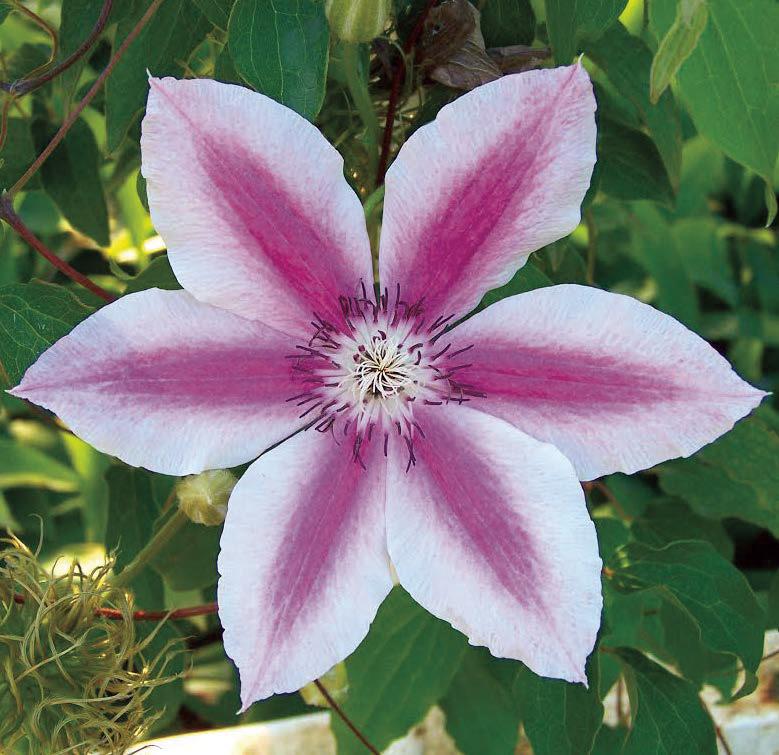








On a recent trip to Amherst, Massachusetts, I visited the home of poet, Emily Dickenson. Miss Dickenson and I share a love for night gardening. She was afflicted with an eye condition which made sunlight painful and an acute shyness which forced her to lead a rather solitary life. In a long, white nightgown she cared for her garden under cover of darkness. I love toddling about my garden at 4am in my pjs, coffee in one hand, pruners in the other.
For Night Gardens, Emily and I recommend you use a combination of plants that emit fragrance at night, whose white leaves or flowers pop after dark, and have silvery finishes that reflect moonlight. Choose planting areas near seating for easy viewing and smelling, adjacent to paths that are nighttime safe, and nearby landscape lighting that highlights plant form and create atmosphere. Remember to leave space for the big moths and bats that will come.
Here are some evening fragrant suggestions for your Night Garden. Flowering Tobacco, Nicotiana spp., are familiar annuals. They bloom from June till frost, are sweetly fragrant, and the white-flowered varieties glow in the moonlight.
Evening primrose, Oenothera biennis, is a night-blooming biennial. Its rosette-like flowers bloom from June to September atop a tall stem
Plant Health Care is a holistic approach to tree and shrub care. Its focus is on maintaining plant vigor to minimize adverse effects of stress due to environmental, plant pest or disease issues.
The absolute best approach to maintaining plant health and vigor is through continual inspections monitoring potential pests. When detected timely, control measures are employed to prevent or minimize adverse plant pest problems or disease. Maintaining healthy landscapes through proper cultural practices while performing numerous inspections often in conjunction with applying control measures, leads to healthier plants. Stressed plants will often enter a spiral of decline and may succumb to these stressors. PHC or Plant Health Care technicians are equipped to provide numerous control measures and are experienced to determine the most effective course of action.
Long gone are the days of indiscriminately performing broad spectrum insecticide cover sprays, and rightfully so. Today’s PHC technician targets only those harmful plant pests that exceed a threshold level. Through their depth of knowledge, experiences, and familiarity of plants they deliver sound controls often using biological and cultural methods, drastically reducing insecticide use.

By Lesley Parness Garden Educator
covered in soft hairs. Seen from a distance, it works well at the back of a border or cottage garden and in naturalized plantings.
Evening stock, Matthiola longipetala, is an old fashioned annual for cottage gardens, borders, and pots. These edible, night blooming flowers release a strong, sweet fragrance.
Perfect for a well-placed pot is Gardenia jasminoides. The intensely fragrant, waxy white flowers bloom throughout the summer, especially if you keep it moist and find just the right combination of morning sun and afternoon shade. Move it inside when fall arrives.
Scrambling up a trellis, the robust Moonflower Vine, Ipomoea alba, features large, fragrant white flowers which open at dusk from mid-summer into fall, and then close and die before noon. Grow them with Morning Glories for round-the-clock blooms.

The Oriental White Lily, ‘Casa Blanca’ is stunning. Its 6” wide pure white flowers with their recurved petals, sit atop a 4’ tall, rigid stem. Their fragrance is simply ravishing. Leave stems and foliage in place until the end of the season to feed the bulb.
Another bulb with a big white whiff is the Tuberose, Polianthes tuberosa. You will have to dig this and store it in the winter, but your nose will thank you as the scent of its mass of small white flowers is hypnotizing. Its striking silhouette with its long, flowering spike that can reach 4’, adds vertical garden interest.
If you need a big, white wall think Mock Orange, Philadelphus which can reach 12’ in height. Often dismissed as “old fashioned,” this durable shrub earns its nighttime props with long-lasting white flowers and intoxicating scent, very similar to that of orange blossoms.
The humble petunia is an easy to grow, inexpensive addition to a Night Garden. From the heirloom Petunia pendula to the new Thumbelina series, every one of them is super scented. Pop them into a hanging container and breathe deeply.
The white leaves, stems or flowers of these following plants earn them a Nighttime Garden spot. Four O’Clocks, Mirabilis jalapa, are punctual annuals, blooming from June to October. The fragrant, lemon-scented funnel-shaped flowers open for one day. Other white flowered plants to consider are Dappled Willow, Diamond Frost Euphorbia, Phlox paniculata ‘David,’ ‘Star Cluster’ Tickseed, and White Profusion Zinnias.
Plants with silver foliage glow in moonlight and tend to be more drought and heat tolerant because the fine white hairs that cover their foliage reflect the sun and retain water. They also tend to be resistant
By Bert Kuhn
Licensed Tree Expert
Once again, the old adage “the right tree in the right place” is critical and cannot be stressed enough in the design aspect of choosing plants and creating landscapes. Installing or matching trees proven to thrive in the soil, moisture, geographical location, and microclimates of the planting site is of utmost importance. Seek advice from professionals or hire them to design and properly install plants suited to the site. This step cannot be overstated as many inherent plant problems are installed into our landscapes. Along with wise plant choices, properly planted trees, which have been root pruned, had packaging materials removed (twine and basket materials released) and planted at the correct depth are the foundations of successfully establishing longevity. Newly established plants often need attention to correct rooting issues not dealt with at planting time. Installers
or planters should remove the base ties, pull back the burlap and often remove soil from the top of the ball to confirm the visual trunk taper to establish proper planning depth. Corrective pruning at or soon after establishment is critical to eliminate conflicting growth and provide desired structure. Plants often are delivered with pre-existing structural issues or are already harboring plant pests.
Being experienced arborists, PHC technicians are critical in establishing new landscapes, especially if contracted or conferred with at the design phase. If not, they should be hired soon after to mitigate negative plant issues early on. Please note that subject to the New Jersey License Tree Care Act, only Licensed Tree Experts can offer consultation, diagnosis, and treatment of plant pests and diseases, Licensed Tree Care Operators cannot.
to rabbits and deer.
Lamb’s Ears, Stachys byzantina, is called Silver Carpet because of its silvery appearance. More light reflecting favorites are Dusty Miller, Silver Nickel Vine, White Roses, Alyssum, Wormwood, Japanese Painted Fern, Brunnera, Cardoon, Licorice Plant, and Lungwort. So, night owls and insomniacs, get ready to garden with these words from Ms. Dickenson - “And still within a summer’s night, A something so transporting bright, I clap my hands to see.”
Editor’s Note: Lesley Parness offers a variety of presentations and workshops for garden clubs, plant societies, and horticultural gatherings. Recently retired from her position as Superintendent of Horticultural Education at the Morris County Park Commission, and with four decades of teaching environmental science and garden education, her focus now is garden history. A complete listing of her talks can be seen at lesleyparness. com and she can be reached at parness@verizon.net. This column will appear in the paper every other month.
Periodic visits or inspections by PHC professionals throughout the growing season are highly recommended to protect your valuable landscape. The primary goal of a successful Plant Health Care program is to keep plants healthy and vigorously growing. Healthy plants are less susceptible to the adverse effects of plant pests, disease, or environmental factors.
Now is a most advantageous time to inspect landscapes as the foliage present displays evidence of insect pests, disease, or site problems. Although well into the growing season, it is not too late to hire / solicit plant healthcare services for consultation and inspections. The landscape site and plant material present allow these professionals to view and assess their overall health.
Upon performing these site visits, remedial actions can be planned for and/or possibly begun.
In either case, important information is gathered and recorded establishing a familiarity with the landscape leading to effective strategies moving forward. As we progress later into the growing season, the adverse effects of many plant pests become more apparent. Early leaf drop, defoliation, or nonuniform abscission are indicators of a plant’s stress and decline. Through experience and knowledge, PHC professionals are very familiar with prevalent pest problems we are currently facing. However, new pests seem to be continually emerging which require their watchful eyes to detect and provide controls where possible, examples of such being the Spotted Lantern Fly and Beech Leaf Disease. As more insight is gained, controls are being developed to mitigate these relatively new plant pests. Protect your valuable landscapes by employing a Plant Health Care program today!
Editor’s Note: Bert Kuhn is President of the New Jersey Chapter of the International Society of Arboriculture and CO/Owner of Action Tree Service (# NJTC768009), based out of Watchung, NJ. He can be reached at 908756-4100
Recently I had two wonderful opportunities to represent our association and members, each with a different purpose. Although we often have various types of events and attend many industry outings, I’m particularly proud and humbled by these recent two.
Last winter, the education committee of the Nursery and Landscape Association Executives invited me to join a panel of three experts to discuss successful trade shows. I was thrilled and honored by the invitation, and I eagerly accepted. For those who know me, this was a significant moment because public speaking has always been a challenge for me (though I’ve improved considerably and no longer fear it!). Nonetheless, I was genuinely excited about this opportunity.
By spring, I traveled to St. Louis, MO, to meet with my peers and share insights on why our show, Landscape New Jersey, has been so successful. We also discussed our new summer event, the New Jersey Contractors Showcase Expo. It was both enjoyable and exhilarating to speak about a topic I am deeply passionate about.
During the discussion, I covered our diverse marketing strategies, including various media and direct mail campaigns. We explored our educational offerings and the types of vendors we attract. We also examined the trends we’ve observed
Recent years have brought heavy rains, damaging winds, and even tornadoes, threatening the livelihoods of many farmers. The NJ Farm Service Agency (NJ FSA) stands firmly behind our state’s agricultural industry and is here to provide crucial support during these challenging times.
One critical step for farmers impacted by storms is to report their losses promptly to their local NJ FSA county office. This notification process is essential to securing a disaster declaration from the federal government. A disaster declaration unlocks a range of critical disaster assistance programs specifically designed to aid farmers in recovering from storm damage. These programs can offer assistance for a variety of storm-related expenses, including:
Debris removal: Clearing fallen trees, branches, and other debris from fields and farmyards is often a significant undertaking after a storm. The NJ FSA Environmental Quality Incentives Program (EQIP) can help offset the costs associated with debris removal and get farms operational again as quickly as possible.
Fence repair: Damaged fences can leave livestock vulnerable and crops exposed. Repairing fences is another area where NJ FSA programs can provide much-needed financial support. The Emergency Relief Program (ERP) offers financial assistance to eligible farmers for essential repairs to fences, buildings,

By Gail Woolcott Executive Director
post-COVID that have significantly impacted the show, particularly in terms of attendee registration. Additionally, we talked about the importance of engaging our board members and exhibitors in promoting the show, as well as our plans for future improvements.
Finally, we each shared advice for other associations planning their next show or conference, drawing from our own experiences and insights. In addition to being able to proudly represent the New Jersey Landscape Contractors Association (NJLCA) and our trade shows, I learned so much from my fellow association executives from around the country and Canada. In addition to the session I was involved with, there were other educational sessions throughout the conference discussing everything from data management to engaging members. I soaked up every bit of knowledge I could. And we even had some downtime where we were able to visit the famous St. Louis Arch and

attend a Cardinals vs. Mets game (I traveled all the way to Missouri to see my home team!).
Next, a group of members and I went to Washington, DC for the annual H-2B “Fly-in” (I took a train, and oh boy that is a story starting with us being locked down at the Capitol Hill club and ending up with me taking an uber from Philadelphia to northern Bergen County, NJ). To remind you, H-2B is a temporary worker program that helps our industry with seasonal workers that come from other countries to assist with the additional workload that we take on during the landscape season. Our group, hailing from all over the state (along with others from 29 different states), met with our legislative representatives and staff to discuss the request to increase the cap on the number of workers.
NJLCA partnered with NALP (National Association of Landscape Professionals), FEWA (Federation of Employers and Workers in America),
SEA (Seasonal Employment Alliance), and AmericanHort to participate in the annual H-2B fly-in prior to the Department of Homeland Security and Department of Labor Appropriations markup. This was an excellent time to speak with legislators about the importance of the H-2B program and the need for cap relief through the appropriations process. We also spoke on the importance for legislators to work together and support permanent cap relief.
Representing NJ were Todd Bradbury of Bradbury Landscape, Rebekah Alstede of Alstede Farms, Dana Davis of Stony Hill Gardens and of course, me. Yellowstone Landscape also attended a few of our meetings. We met with the offices of Congressman Donald Norcross, Congressman Bill Pascrell, Congressman Thomas Kean, Congressman Josh Gottheimer, Congresswoman Mikie Sherrill and Congresswoman Bonnie WatsonColeman.
By Bob Andrzejczak State Executive Director
and other structures damaged by natural disasters.
Timely Reporting is Key
The faster farmers report storm damage, the sooner the NJ FSA can begin the process of assessing need and delivering support. Here’s why prompt reporting is critical:
Expedited Assistance: Early notification allows the NJ FSA to deploy resources and personnel to affected areas quickly. This helps to streamline the application process for disaster assistance programs and get financial aid into the hands of farmers when they need it most.
Stronger Case for Federal Aid: Prompt reporting from a larger number of farmers strengthens the NJ FSA’s case for a federal disaster declaration. A disaster declaration unlocks a wider range of assistance programs and makes them available to a greater number of impacted farmers.
Your Partner in Recovery
The NJ FSA recognizes the unique challenges that New Jersey farmers face. We are committed to providing a helping hand during difficult times and offer a variety of programs beyond disaster assistance: Loan programs: The NJ FSA offers various loan programs to help farmers finance agricultural operations, including loans for equipment purchase, land improvement, and operating expenses. Particularly noteworthy are our disaster assistance loans, designed to help farmers recover from storm damage and other natural disasters.
Risk management programs: These programs help farmers manage financial risks associated with weather events, market fluctuations, and other unforeseen circumstances. One such program is Non-insured Crop Disaster Assistance (NAP), which provides
It’s been an exciting spring/ early summer here at NJLCA and I am looking forward to many more adventures and opportunities for our members throughout the summer!
Editor’s Note: Gail Woolcott is the Executive Director for the New Jersey Landscape Contractors Association. Gail received the New York State Turf & Landscape Association 2022 “Person of the Year” award on December 1, 2022. Gail also received a proclamation from the Westchester County, New York Board of Legislators proclaiming December 1, 2022 as “Gail Woolcott Day” in Westchester County. Gail has also been presented with a community service award from the Borough of Fairview, New Jersey for her assistance in leading the 9-11 Memorial Park project and the Legislative Champion of the Year award from the Federation of Employers and Workers of America. She can be reached at 201-703-3600 or by emailing gwoolcott@ njlca.org.
storm damage, you can ensure you are eligible for the assistance you need to get your farm back on track. For more information on NJ FSA disaster assistance programs, loan programs, risk management options, conservation initiatives, and acreage reporting requirements, please contact your local county office or visit our website.
Remember, the NJ FSA stands with New Jersey’s farmers. We are here to help you weather the storm and get back on your feet.
financial assistance to cover losses on insured crops due to natural disasters or other weather events.
Conservation programs: The NJ FSA offers programs that encourage sustainable agricultural practices and help farmers conserve soil and water resources.
It’s important to note that acreage reporting is a critical part of being eligible for many NJ FSA programs, including disaster assistance. Acreage reporting involves submitting information about the crops you plant and the land you use for farming each year. This information helps us track agricultural trends, allocate resources effectively, and ensure that farm programs reach those who need them most.
By reporting your acreage regularly and promptly reporting
Prospective Loss Adjusters must meet specific eligibility criteria outlined by the USDA. For inquiries or to express interest in these positions, individuals can contact Aly Dyson, NJ FSA Farm Program Disaster Specialist, at Alyson.Dyson@usda. gov or 609-438-3147.
Editor’s Note: Bob Andrzejczak is the State Executive Director of the USDA Farm Service Agency (FSA) in New Jersey. He can also be reached at 609587-0104 during regular business hours. For more information, please visit https://www.fsa.usda.gov/ state-offices/New-Jersey/ sed-biography/index
(Continued from page 1)
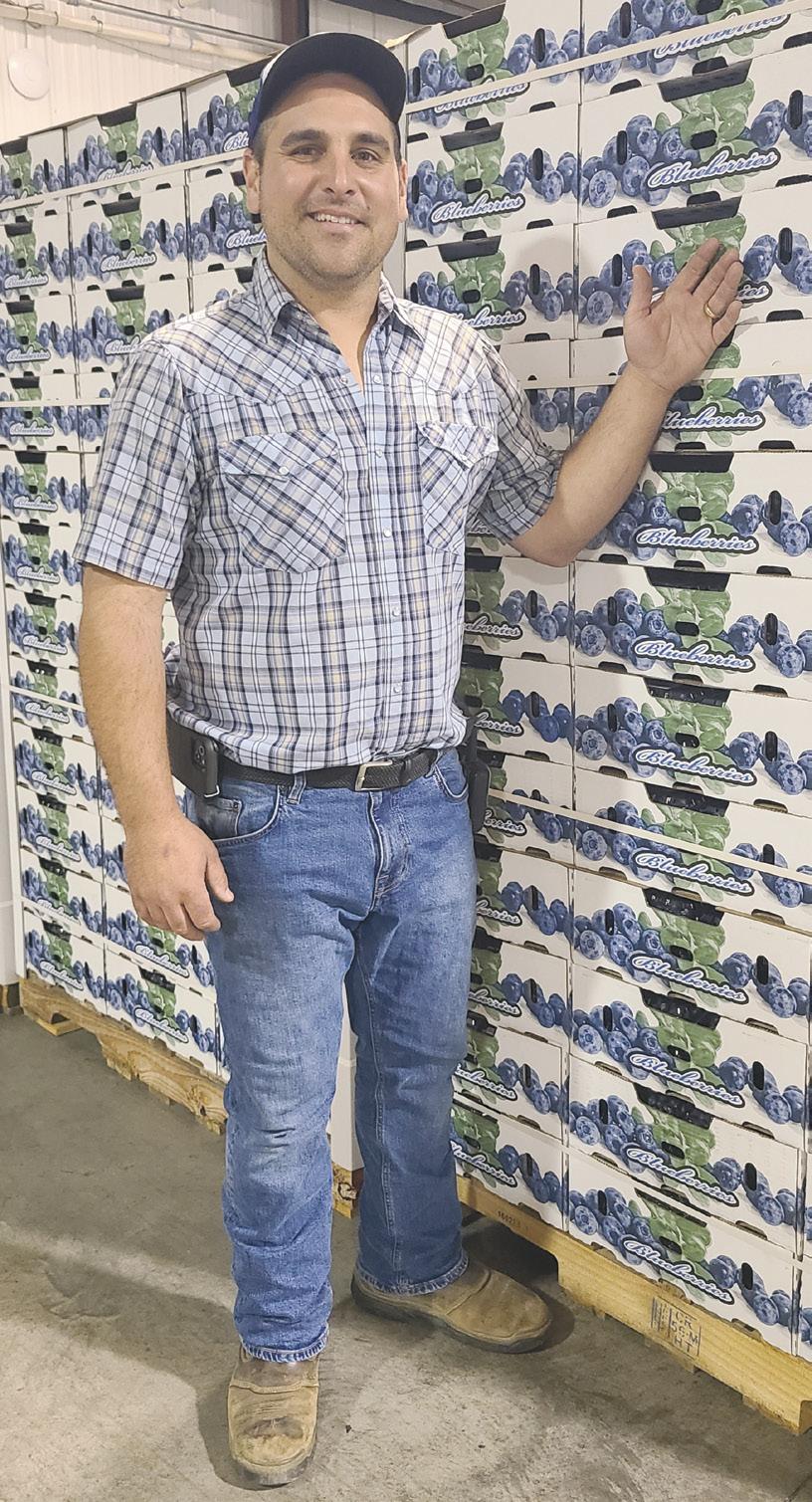
operation. The family are also active members of the New Jersey Blueberry Industry Advisory Council, along with local county boards and the federal United States Highbush Blueberry Council. Matt, my tour guide, is president of the New Jersey Blueberry Growers Association. The association represents all of the blueberry growers in the Garden State.
Blueberries in New Jersey for 2023 had a production value of $92.1 million, making it New Jersey’s highest selling crop. New Jersey annually ranks in the top six in the U.S. in the production of blueberries. Farmers in the Garden State harvested 50 million pounds of blueberries on 10,800 acres last year.
The white walls glistened with cleanliness and all the stainless steel machines sparkled in the light. I was impressed by how clean the operation was.
Blueberries were moving around the room on conveyor belts from the loading dock, through a grading machine, to a fill by weight machine, into clam shells, then a labeling machine with the final stop into crates. I just want you all to know that I’m eating a clam shell of blueberries as I type out this article.
I was then led into a giant walk-in refrigerator that was at a constant 33 degrees. Here is where the blueberries are temporarily stored for freshness before that are shipped out.
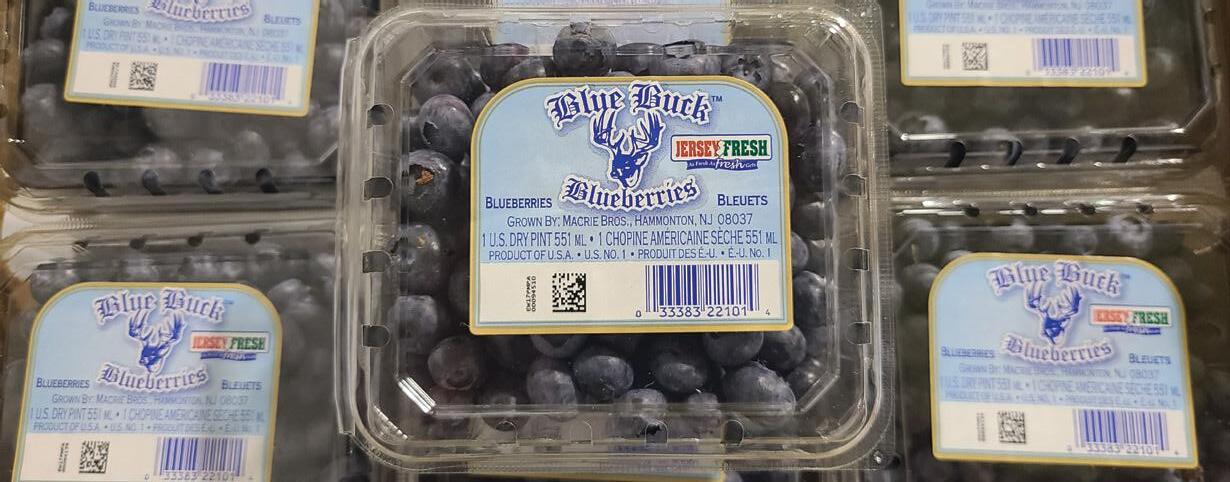

Matt then asked me if I wanted to go outside and pick blueberries. I was thrilled to say yes. We went back to the loading dock then to the parking lot to his pick-up truck. After a short drive on a sandy road, we were in the heart of the blueberry field. There were highbush plants everywhere. I was treated to sample the “Envoy” blueberry. The fruit is large with great flavor and texture. Eating blueberries is beneficial to health as they are known as the “King of Antioxidants.”
Blueberries are low in calories and high in nutrients.
Matt told me the plants were in the ground a good five to seven years, with a root system around 16 inches deep at best. He also told me that they incorporate organic mulch that they make on the farm, into the sandy loam soil. Organic matter is necessary to help the soil retain water and nutrients. I must say, the field was neatly tilled.
As we headed back to the office where I first arrived, I was introduced to Matt’s dad, Paul.
He told me he thinks it will be an
The Northeastern Association of State Departments of Agriculture convenes the following 10 states: Connecticut, Delaware, Maine, Massachusetts, New Hampshire, New Jersey, New York, Pennsylvania, Rhode Island, and Vermont.
The 2024 Governor’s Award for Horseperson of the Year was awarded to Al Ochsner for his service to the equine industry over the last several decades. Ochsner accepted the award at the 67th Annual New Jersey Breeders Awards Celebration at the Horse Park of New Jersey on Tuesday to mark the Month of the Horse in the state.
“Al Ochsner’s dedicated service to the industry and passion for horses makes him an exemplary person to be honored with this award,” NJDA Secretary Ed Wengryn said. “His work with the Standardbred Owners and Breeders Association of New Jersey (SBOANJ) has allowed the state to remain one of the leaders in the industry.”
In 2006, Ochsner became a director of the SBOANJ and served in various capacities there before being appointed executive administrator in 2016. Over the years, he has worked to ensure the strength of the racing industry, whether through on-track initiatives, or programs to promote breeding and owning Standardbreds. Also, he helped secure the five-year $100 million state racing appropriation.
Over the years, Ochsner owned and bred more than 100 horses. He bred and raised Precious Bunny, who in 1991 won 20 of 25 races, earned $2.21 million, and was named Horse of the Year in the U.S. and Canada. The pacer’s victories included the Meadowlands Pace, North America Cup and Little Brown Jug, and Ochsner was recognized as the sport’s Breeder of the Year.
Ochsner’s other top horses included Golden Greek, Keystone Harem, Seminole Lobell, and Town Council.
Ochsner attended New Brunswick High School, where he was president of the school’s FFA chapter. During that time, he began raising and marketing pheasants, a business that later funded his education at Utah State University. He graduated in 1965 with a bachelor’s degree in marketing and economics.
Shortly after starting his professional career, Ochsner got involved in harness racing with a childhood friend. He began with claimers but soon was drawn to higher-level racing and breeding. He started racing horses with the Stafford family and then became involved in partnerships where his horses were trained by the great Billy Haughton, Jan Nordin, and other top trainers.
The Delaware Department of Agriculture (DDA) ended this year’s Delaware Grown Week celebration by launching the “Delaware Grown Road Trip” to encourage residents and visitors to hop in their cars to experience Delaware’s rich and flavorful agricultural heritage, as they travel rural roads to explore Delaware’s many produce farms, farmers markets, and meet specialty crop farmers.
Stopping by Brittingham Farms in Millsboro, surrounded by fields of lavender, lambs frolicking, and maps showcasing the road trips, Secretary of Agriculture Michael T. Scuse shared, “With the unofficial start of summer and people taking to the roads, there is no better time to get out and visit Delaware farms and farmers markets. Our team has highlighted farms in each county where you can find Delaware Grown specialty crops and value-added products, including farm stands and stores, u-pick operations, farmers markets, and other agritourism opportunities.”
Every stop on the three Delaware Grown Road Trips offers participants opportunities to experience the best fresh, in-season fruits and vegetables for you and your family to savor. Most of the stops are open from May through the end of October, although it is highly suggested that visitors confirm locations are open before embarking on their trip. The road trip does not need to be completed all in one day, and you can mix and match the locations throughout the state to create your ideal road trip.
“Not only does it provide farmers the opportunity to diversify, generate additional income, and market directly to consumers, but agritourism adds tremendously to the richness and variety of experiences available to our visitors, contributing to more frequent visits and longer stays. Agritourism helps preserve the rural lifestyle and character that sets Sussex County apart as a unique destination,” said Scott Thomas, Executive Director of Southern Delaware Tourism, the destination marketing organization for Sussex County. “It also offers the opportunity to provide sustainable tourism, which is increasingly important to destinations and travelers. Farms like this have been quickly evaporating from the landscapes from which many of our visitors are traveling, making them a greater attraction more now than ever. Agritourism is a win for everybody, and we are fortunate to have it alive and well in Sussex County.”
Participants can pick up a Delaware Grown Passport from the Delaware Department of Agriculture, participating sites, visitor centers, and many other locations across the state, or download one online at http://delawaregrown.com. By visiting three sites on the road trip and getting your Delaware Grown passport stamped, you can receive a free Delaware Grown t-shirt while supplies last.
Delaware has a longstanding reputation for growing the highest quality and tastiest fruits and vegetables anywhere. The state’s unique and favorable location on the Atlantic Coastal Plain in the Northeast Corridor of the United States adds to the impact and appeal of growing, selling, and buying from Delaware producers. Delaware farmers are number one in the number of acres of lima beans harvested, with more than 25% of the nation’s crop grown here. The state also ranks eighth in the country for watermelon production and tenth for sweet corn.
“Agriculture and tourism are two of the state’s largest industries, and they go hand in hand. Visitors coming to our state are looking for local produce and locally sourced ingredients and enjoy eating at local restaurants. Many of our local restaurants throughout the area use local ingredients from local farms, and they sell products like what Brittingham Farms offers,” said Jessica Welch, Director of the Delaware Tourism Office. “Visitors are always looking for unique experiences, things they can do, and things to do away from the beaches. The Delaware Grown Road Trip is a great example of having something for families and others, including visitors and residents, to do away from the beach area.”
In 2023, Delaware’s community-run farmers markets set an all-time high sales record of more than $4.14 million, demonstrating consumer demand for Delaware Grown specialty crops and value-added products. This year, farmers markets are on the rise, with 28 markets operating across the state, up from 22 last year.
Ten years ago, the Delaware Department of Agriculture partnered with the General Assembly to establish Delaware Grown Week, celebrated annually during the third full week of May.
The Vermont Department of Corrections and Agency of Agriculture, Food & Markets (VAAFM) are partnering to bring local and regional milk to all six Vermont correctional facilities.
Milk is currently served in all correctional facilities, but in recent years most sites have carried only powdered milk. Fresh, local milk will provide individuals incarcerated in Vermont with the full nutritional benefits and taste of Vermont dairy, while also supporting Vermont’s agricultural economy.
“A person’s health and wellness is impacted by everything from medical care to the beverage you drink with breakfast each day,” said Nicholas Deml, Commissioner of the Department of Corrections. “Providing fresh, local milk, creates a more dignified dining experience and healthy offering for the individuals in our care and custody while also supporting Vermont’s dairy industry.”
VAAFM is providing the Department with $15,000 for refrigeration equipment as several facilities require additional refrigeration capacity to start serving fluid milk. Funding for the refrigeration equipment comes from Vermont Dairy Farmers through a dairy promotion checkoff program.
“Milk is a nutritious beverage that is loaded with protein, minerals and vitamins. It is great to see real milk will be served in Vermont correctional facilities. Thank you to the dairy farmers of Vermont for supporting this project and the Department of Corrections for investing in our dairy farmers,” said Anson Tebbetts, Secretary of VAAFM.
Two of Vermont’s six correctional facilities already made the transition to local and regional milk. Chittenden Regional Correctional Facility was the first facility to provide fluid milk in 2019, prompted by strong support from the Legislature’s Women’s Caucus. Representative Carol Ode, a member of the Caucus, was a key facilitator of the effort.
“When the Women’s Legislative Caucus visited the Women’s Correctional Facility a few years ago, we identified fresh milk as a priority and, although a small change, one that could make a big difference,” said Representative Ode. “Secretary Tebbetts immediately went to work, and the result is better health for all those incarcerated and a further expanded market for local Vermont dairy. This story is an example of what Vermonters can do when we listen to each other and when we work together.”
Agriculture Commissioner Bryan P. Hurlburt announced that Dr. Erin Masur, DVM, has joined the Connecticut Department of Agriculture (CT DoAg) as interim State Veterinarian within the Bureau of Regulatory Services. Dr. Masur succeeds Dr. Jane Lewis, DVM, DACVPM who was appointed in 2021 and has departed for a position with United States Department of Agriculture.
“We wish Dr. Lewis all the best in her next chapter and appreciate Dr. Masur stepping into this critical role as it relates to the health of animal agriculture throughout the state and the public at large,” said Commissioner Hurlburt. “Providing continuity of services is important to the agency, especially in a time of emerging animal health issues and upcoming fair season, and we are confident that Dr. Masur’s experience and skill will deliver for our constituents.”
The State Veterinarian directs the overall responsibility of the Animal Health Division, performing administrative, supervisory, financial, technical, and professional duties relative to functions of the agency. They educate the public on prevention, control, and eradication of contagious and infectious disease and the regulation of livestock programs within the state. In addition, the State Veterinarian leads and supervises a team of inspectors and other administrative support staff. Dr. Masur will fulfill these duties while CT DoAg conducts their hiring search to appoint the next State Veterinarian.
“I place a high value on the work that our farmers do, and I appreciate the efforts taken in Connecticut to support our agricultural producers,” said Dr. Masur. “This is an opportunity for me to use my private practice experience to safeguard animal health statewide during this transitional time period.”
Dr. Masur has spent her career focused on small ruminants, pseudo ruminants, large ruminants, and poultry. Currently, she is the owner of a Bantam-based livestock practice that offers traditional ambulatory medicine and surgery for food-producing species. The practice was founded with a greater mission to use community and collaboration to provide educational opportunities to producers and farmers, fellow veterinary practices, ag societies, and first responders. She also acts as the Professor of Large Animal Clinical Nursing for CT State Colleges and Universities. Dr. Masur has used her career to prioritize public health and optimize the health and wellness of the animals of agriculture since graduating Ross University as a Doctor of Veterinary Medicine.
New York State Agriculture Commissioner Richard A. Ball announced that applications are open to New York organizations for the FreshConnect CSA for SNAP program. The program allows SNAP participants to access the popular Community Supported Agriculture (CSA) model by providing farm organizations a way to partially subsidize the cost of weekly share purchases while also lending additional support to New York’s farmers and producers. This program builds on Governor Kathy Hochul’s initiatives to boost demand for New York agricultural products, bolster New York’s food supply chain, and ensure all New Yorkers have access to fresh, local foods.
Commissioner Ball said, “One of our top priorities at the Department is to help New Yorkers in underserved communities to access fresh, locally grown, nutritious foods, while supporting our farming businesses at the same time. Our FreshConnect CSA for SNAP program is a great example of connecting these dots, making sure that New Yorkers using SNAP can access CSA shares full of delicious New York grown produce. I encourage eligible organizations to apply and look
forward to the continued success of this unique program.”
The FreshConnect CSA for SNAP program helps SNAP participants working with awarded organizations better access CSA shares. Funding provided to eligible applicants, such as not-for-profit organizations, Indian tribal organizations, public educational institutions, and local or municipal governments will offset the cost of weekly CSA shares sold to SNAP participants, lowering the cost to consumers while still providing the farmer with the full price of the food. Up to 50% of the cost of a weekly share purchased by a SNAP recipient with their SNAP benefits may be paid by awarded organizations through this program.
Awards for this opportunity will be made on a rolling basis until funds are depleted. A total of $250,000 in funding is available through this Request for Applications. Applications must request the full available award of $50,000 for the project to be considered.
Applications must be submitted by 3:00 pm on August 27, 2024.
Learn more at agriculture.ny.gov/rfa-0338-freshconnect-csa-snap-program.


By Andy Lagana Chef
Greetings Gardener News
readers. We’ve rounded the corner on the year’s midway point and summer is in full swing – which means the grill does a lot of heavy lifting for meal prep! This month, I am sharing a recipe for Balsamic Marinated Grilled Flank Steak, a long, flat cut with a significant grain and also known for its bold flavor.



The ingredients needed are 2 lbs. flank steak, 1/2 cup soy sauce, 1/3 cup vegetable oil, 2 tbsps. dark brown sugar, ¼ cup Worcestershire, 1 tsp. Dijon mustard, 4 cloves of garlic - crushed, 2 tbsps. chives - minced, 1½ tsps. ground black pepper and 2 tsps. balsamic vinegar.
Mix all together in a Ziploc bag or a large dish. Add the flank steak and marinate it (covered) in the refrigerator overnight, or at least all day. Then, heat the gas grill to high heat. Remove the steak from the marinade and lay it on the grill for two minutes per side. Then, turn down the heat to medium and cook the steak for another 7-10 minutes, flipping it halfway again, or until it reaches an internal temperature of 130° F for medium rare, or longer for medium and well done.
Remove and set the steak aside to rest on a cutting board with foil draped over the top. Next, place 1/2 of the remaining marinade in a sauce pan over medium heat. Bring the marinade to a simmer for 10 minutes and set it aside. Slice the steak against the grain and serve it with a drizzle of additional sauce if desired.
As a side dish, I am a
fan of oven roasted potatoes. You’ll need 2 lbs. small potatoes - halved or quartered, extra virgin olive oil (EVOO) for drizzling, sea salt, freshly ground black pepper and finely chopped fresh parsley for garnish. For the dressing, set aside 2 tbsps. EVOO, 1 tsp. lemon zest, 2 tbsps. fresh lemon juice, 1 tsp. Dijon mustard, 2 garlic cloves – minced, 1 tbsp. fresh rosemary or thyme – minced, ¼ tsp. red pepper flakes, ¼ tsp. sea salt and freshly ground black pepper. Preheat the oven to 425°F and line a large baking sheet with parchment paper. Toss the potatoes with the olive oil, salt and pepper, and spread them evenly on the baking sheet. Roast 20 to 30 minutes, or until tender and golden brown around the edges. The timing will depend on the size and freshness of your potatoes. To make the dressing, use a small bowl and whisk together the olive oil, lemon zest, lemon juice, mustard, garlic, rosemary, red pepper flakes, salt and pepper. Drizzle the dressing onto the cooked potatoes and gently toss. Season to taste with more salt and pepper, and then sprinkle with parsley. And let’s not forget the fresh Jersey buttered corn on the cob! You can throw the whole corn cob, husks and all, directly on the grill. Sometimes the husk can burn the corn’s tips. To avoid this, trim the stalk’s tassels ahead of grilling and peel back a few layers of the husk so the grill can get to work faster on the corn. Place it on the grill
and close the cover for 15 to 20 minutes, turning every 5 minutes or until kernels are tender when pierced with a knife.
I’ve had discussions with family and friends about the various ways of eating corn on the cob. There are different techniques which have actually been coined and studied! Although there is no right or wrong way to eat it, your preferred method may say a lot about your personality. There are three distinct ways that have been identified, along with the associated traits:
• The Typewriter – Eating in straight rows from left to right. These are analytical and rational people.
• The Rolling Pin – Eating in circles by rolling the corn around and around. People who eat their corn this way are spontaneous, creative and multitaskers (like me!)
• The Shaver - Avoiding the tricky cob issue altogether by slicing off the kernels with a knife. People who eat corn this way are concerned about neatness and tidiness. Finally, for the wine pairing, both Merlot and Cabernet Sauvignon can be excellent choices. Merlot, with its medium body and soft tannins, is ideal for this leaner cut of flank steak. A Cabernet Sauvignon will work as well, although with its full body and firm tannins, this wine traditionally pairs well with fattier, more flavorful cuts like ribeye or porterhouse. Enjoy!
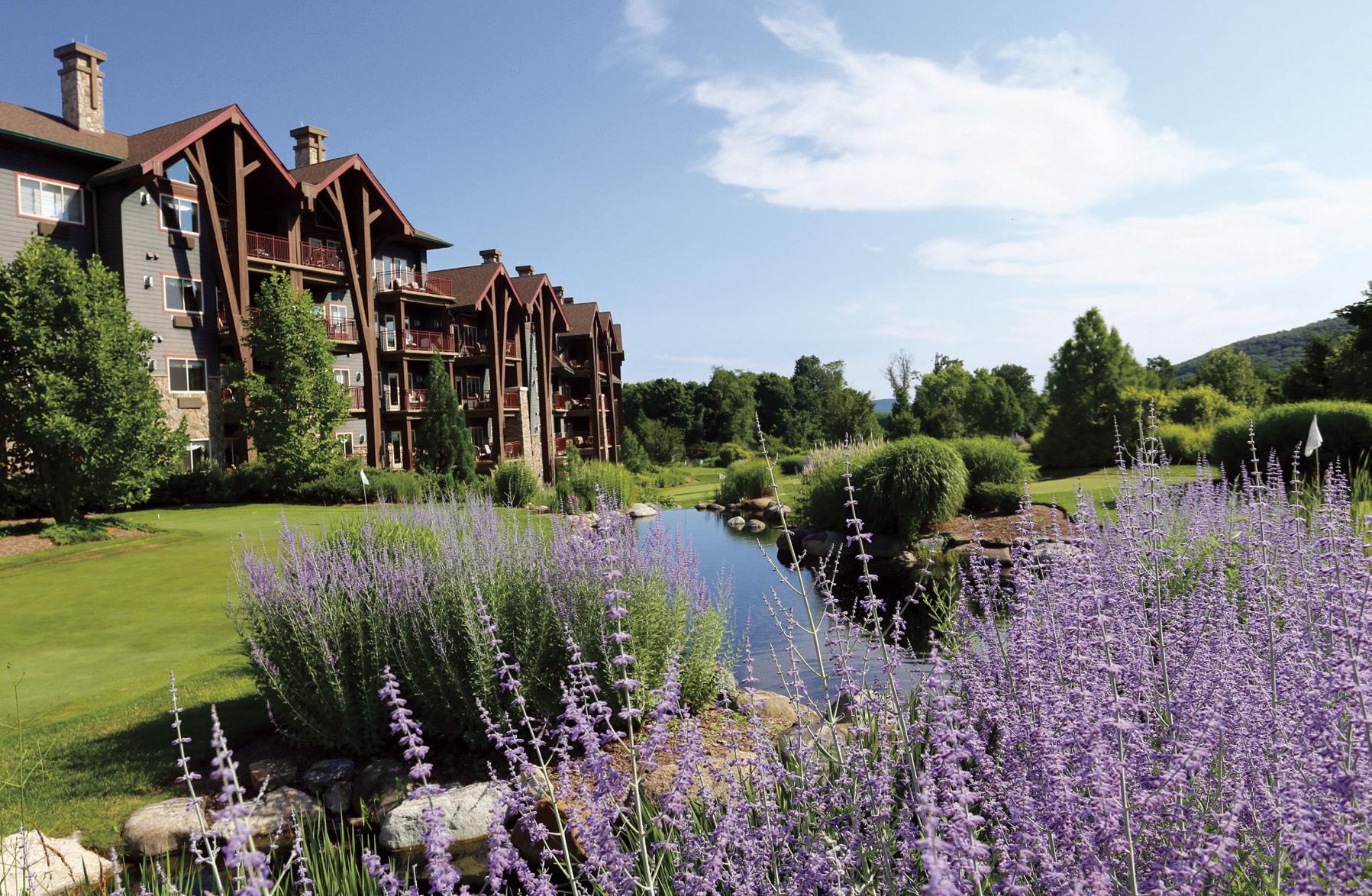



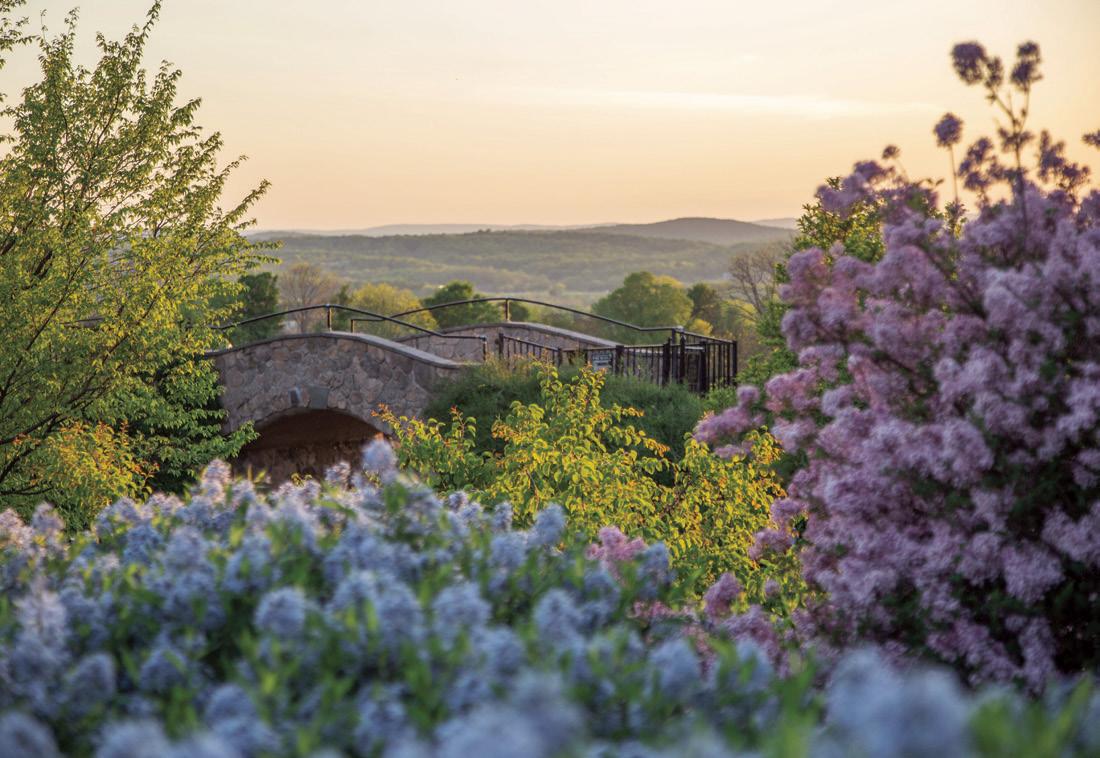



(Continued from page 21)

Tom Castronovo/Photo
Blueberry grading and filling by weight machine.
excellent berry season this year. He operates the farm with his brothers Nick, Mike and son Matt and nephews Nick Jr. and Mike Jr.
The blueberry season for New Jersey lasts through the end of July, which is National Blueberry Month.
Matt told me after the plants are done producing fruit, the plant
pruning, and maintenance season begins.
Before I headed home, Matt thanked me for stopping by and told me that they partner with Mother Nature every day.
Now I’m signing the Jersey Blue’s because I’m out of blueberries. It’s off to a farmer’s market!

Tom Castronovo/Photo
Macrie Brothers Blueberry Farms at 7638 Weymounth Road in Hammonton, Atlantic County, NJ.
Editor’s Note: Tom Castronovo is executive editor and publisher of Gardener News. Tom’s lifelong interest in gardening and passion for agriculture, environmental stewardship, gardening, and landscaping, led to the founding of the Gardener News, which germinated in April 2003 and continues to bloom today. He is also dedicated to providing inspiration and education to the agricultural, gardening, landscaping, nursery, and outdoor living communities through this newspaper and GardenerNews.com.
Tom Castronovo
Todd Pretz
Gail Woolcott
Andrew Bunting
July 2024 Columnists
Brian Schilling
Peter Melick
Bob Andrzejczak



Bruce Crawford
Andy Lagana Joe Atchison III
Bert Kuhn Hubert Ling Lesley Parness

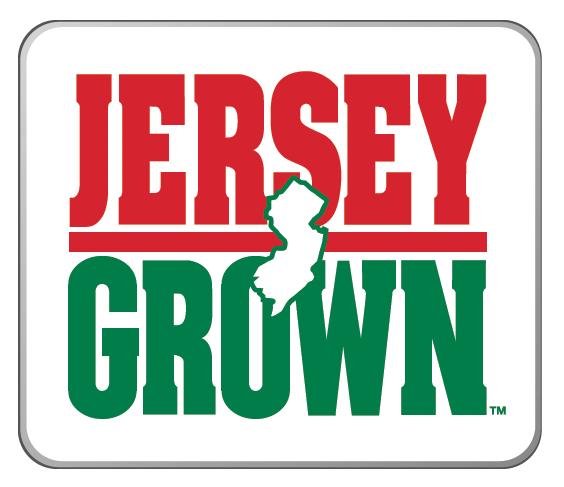






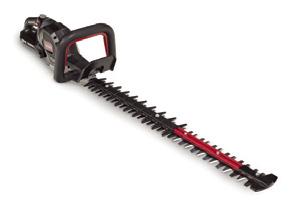
7500-G SERIES ZERO-TURN
96” TURBO FORCE ® CUTTING DECKS
PRODUCTIVITY TO A NEW LEVEL
Impressive 96” wide cutting deck folds to 75” to fit in
ALL DAY PERFORMANCE
The fully interchangeable 60V Max*
Flex-Force battery system powers the entire line of Revolution commercial grade handheld tools. The backpack, available as a power source for the leaf blower, string and hedge trimmers, and is built for comfort and ready to keep jobs moving all day.
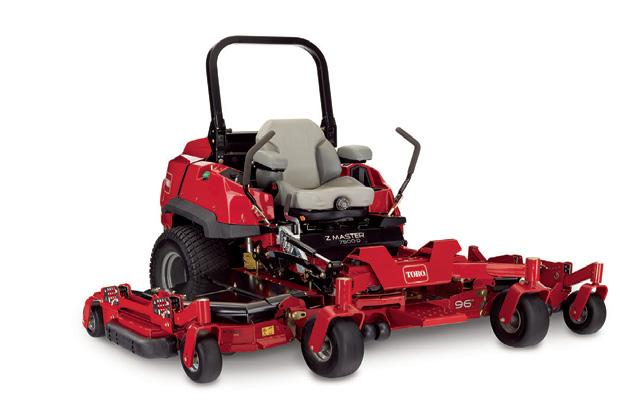

STAND-ON MOWERS
TRACTION & HANDLING
A wide stance and optimal balance enhance hillside stability and control.
CUSHIONED SUSPENSION
Flex-Ride operator platform suspension self-compensates for operators of all sizes, resulting in less fatigue and higher productivity throughout the day.

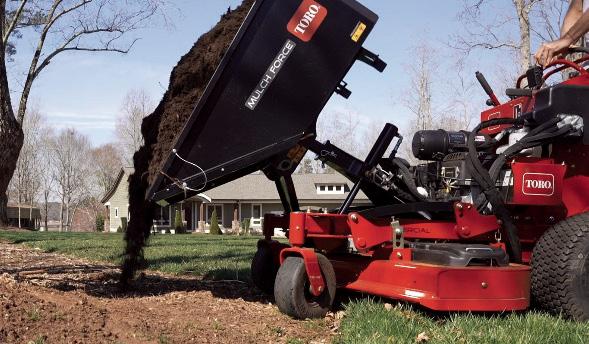

Dual
Provide
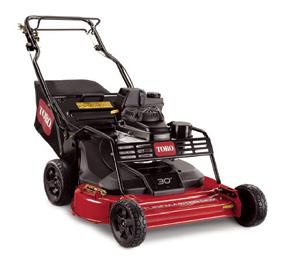
A variety of attachments and accessories such as Mulch Dump, Pro-Force blower, snow thrower, power broom, tine rake, dethatcher and BOSS snow blade all provide the ultimate in productivity.
